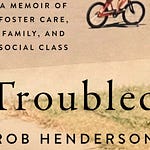In June 1991, The New York Times published a piece titled “Scientists Study Ancient DNA for Glimpses of Past Worlds.” Published a year after Michael Crichton’s 1990 novel Jurassic Park, on which the 1993 blockbuster would be based, the article opens “Will it one day become possible to breed a living dinosaur from genes preserved in fossils?” More than 30 years on, we obviously have not bred a living dinosaur, nor come even close. But the early 1990’s kicked off the first age of ancient DNA with massive optimism, stimulated by the spread of polymerase chain reaction (PCR) technology, which allowed the amplification of minute amounts of genetic material. I remember this particular article because an extract was passed around my 8th-grade science class. Today I talk to Dr. Elizabeth Jones, author of Ancient DNA: The Making of a Celebrity Science, about the excitement in paleogenetics in the 1990s, its subsequent retrenchment as a field, and the prompt renaissance in the late 2000’s under the leadership of Svante Pääbo and Eske Willerslev.
Jones first articulates her idea of what “celebrity science” is. Rather than science being driven by an individual, like Albert Einstein or James Watson, she argues that fields of science itself can become a celebrity due to strong public interest. This was clearly true in the 1990’s, with the frequent popular press stories about dinosaur DNA and the tie-in to Jurassic Park, and in the late 2000’s and down to the present, culminating in Pääbo being awarded a Nobel Prize. In her book, Jones views celebrity science as a wholly positive development, allowing for a full exploration of the possibilities of a field, and putting the spotlight on possible problems so that science’s self-correction mechanisms can kick-in. This was certainly true with the first “hype cycle” of ancient DNA, when it turned out that many of the specific results were actually the result of modern contamination. Jones outlines how in fact it was Pääbo and his collaborators who were the skeptics demanding stricter methods and frameworks before publication. Ancient DNA then recounts how a second hype cycle was triggered by genomic sequencing’s integration into paleogenetics, opening up an avenue to obtain the whole genomes of Neanderthals and other species.
Jones’ Ph.D. work, which led to Ancient DNA, was just concluded in 2015. But she recalls the mad last-second scramble to update the manuscript at the last second because of this last half a decade’s flood of results. They consider the field’s future possibilities, and finally the prospects for genuine retrieval of biological material from actual dinosaurs, the original ambition in the 1990’s















